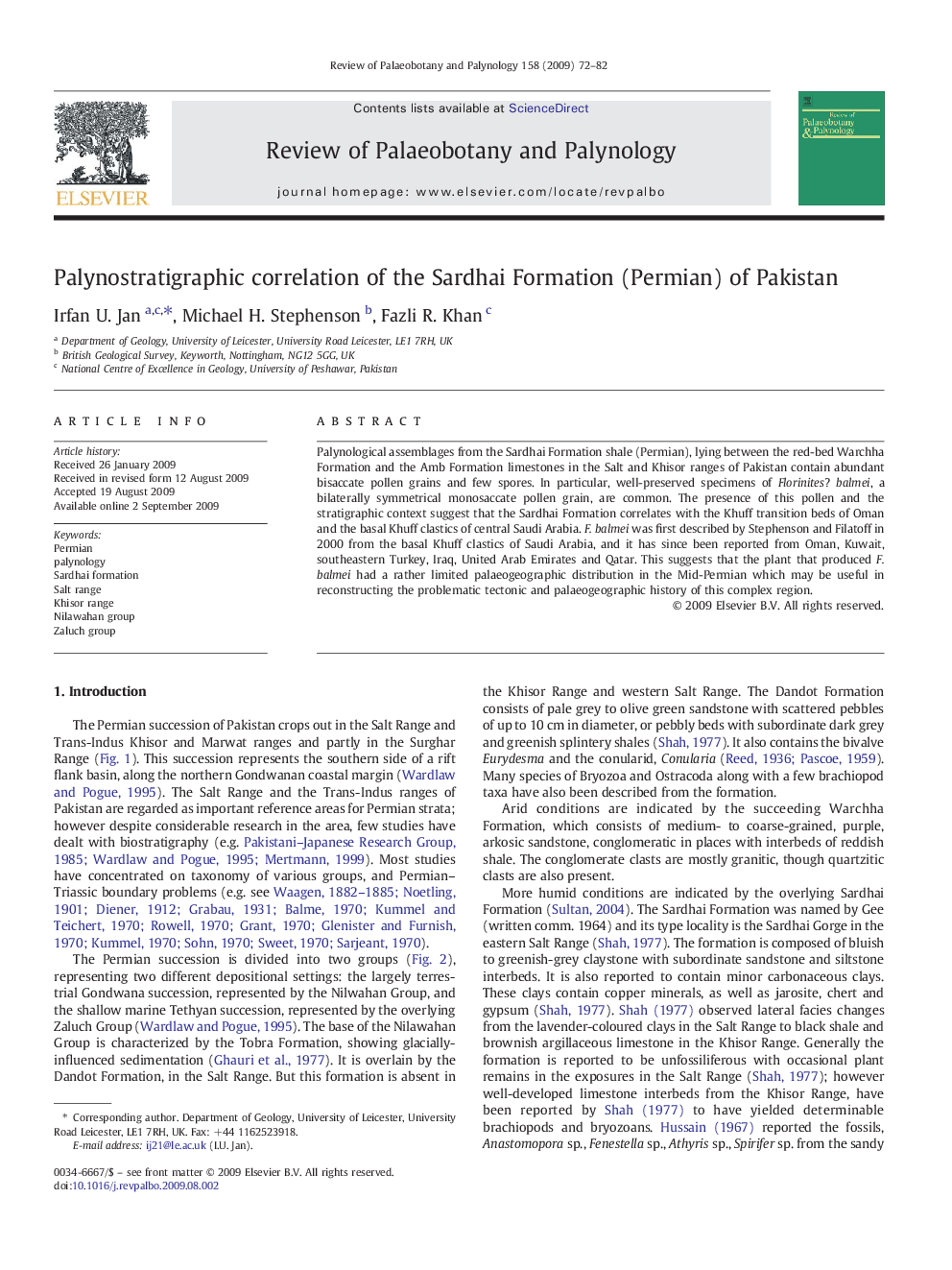| Article ID | Journal | Published Year | Pages | File Type |
|---|---|---|---|---|
| 4750752 | Review of Palaeobotany and Palynology | 2009 | 11 Pages |
Abstract
Palynological assemblages from the Sardhai Formation shale (Permian), lying between the red-bed Warchha Formation and the Amb Formation limestones in the Salt and Khisor ranges of Pakistan contain abundant bisaccate pollen grains and few spores. In particular, well-preserved specimens of Florinites? balmei, a bilaterally symmetrical monosaccate pollen grain, are common. The presence of this pollen and the stratigraphic context suggest that the Sardhai Formation correlates with the Khuff transition beds of Oman and the basal Khuff clastics of central Saudi Arabia. F. balmei was first described by Stephenson and Filatoff in 2000 from the basal Khuff clastics of Saudi Arabia, and it has since been reported from Oman, Kuwait, southeastern Turkey, Iraq, United Arab Emirates and Qatar. This suggests that the plant that produced F. balmei had a rather limited palaeogeographic distribution in the Mid-Permian which may be useful in reconstructing the problematic tectonic and palaeogeographic history of this complex region.
Keywords
Related Topics
Physical Sciences and Engineering
Earth and Planetary Sciences
Palaeontology
Authors
Irfan U. Jan, Michael H. Stephenson, Fazli R. Khan,
